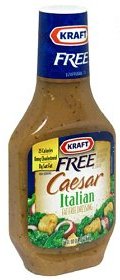Triglycerides are a potent trigger for coronary plaque growth.
Triglycerides in and of themselves probably do not cause plaque growth. Instead, triglycerides contribute to the formation of abnormal lipoproteins in the blood that, in turn, trigger coronary plaque, like VLDL, intermediate-density lipoprotein (IDL), and small LDL. Excess triglycerides also modify HDL structure and cause you to lose HDL in the urine.
I see plenty of people who begin with triglycerides of 200 mg/dl, 300, 700, even over 1000 mg/dl. It doesn't take long before you learn what works, what doesn't to reduce triglycerides. This is especially true in the Track Your Plaque approach, in which our target for triglycerides is 60 mg/dl or less.
Here's a list of things to consider if you are trying to gain control of your triglycerides:
--Fish oil --A mainstay of treatment. The omega-3 fatty acids from fish oil are the number one most potent treatment for high triglycerides.
--Reduction of high-glycemic index foods --Most notably wheat. Everybody knows that we shouldn't eat Snickers bars or bags of licorice. But many people eat plenty of wheat-containing breads, pastas, pretzels, crackers, breakfast cereals, etc., all in the name of increasing whole grains and fiber. In reality, they are causing triglycerides to skyrocket, dropping HDL, forming small LDL, increaaing blood sugar and blood pressure, and increasing obesity.
--Eliminating fructose and high-fructose corn syrup--This ubiquitous sweetener is now consumed in enormous quantities by the average American, nearly 80 lbs per year per person. You'll find it in soft drinks, ketchup, beer, breads, breakfast cereals, and many other processed foods. You'll find none in green peppers, cucumbers, and raw nuts. Fructose causes large rises in triglycerides, as well as diabetic patterns. Don't let "fat-free" claims fool you. Take a look at the ingredients in Kraft Fat-Free Caesar Italian salad dressing, for instance:
Kraft Fat-Free Caesar Italian 
Ingredients:
Water, Vinegar, High Fructose Corn Syrup , Corn Syrup , Salt, Parmesan Cheese, Part-Skim Milk, Cheese Culture, Salt, Enzymes, Contains less than 2% of Garlic, Whey, Onion Juice, Autolyzed Yeast Extract, Phosphoric Acid, Worcestershire Sauce, Vinegar, Molasses, Corn Syrup , Water, Salt, Caramel Color, Dried Garlic, Sugar ,Spices, Tamarind, Natural Flavors, Hydrolyzed Soy Protein, Xanthan Gum, Potassium Sorbate and Calcium Disodium EDTA as Preservatives, Dried Garlic, Buttermilk, Spice, Dried Parsley, Caramel Color, Sodium Phosphate, Oleoresin Paprika.
--Alcohol--While a couple of drinks a day raises HDL, exerts anti-inflammatory effects, and reduces blood pressure, more than this begins to raise triglycerides. Although I've come across no formal studies on this question, my gut sense is that beer, in particular, raises triglycerides more than wine or other alcoholic beverages. Could it be the wheat source of beer? Or its high-fructose corn syrup? I don't know, but beer is the least desirable form of alcohol of the choices we have.
Following these simple steps, it is unusual in my experience that you cannot achieve a triglyceride level <60 mg/dl. Rarely do we need to add fibrate drugs or other prescription agents to reduce triglycerides.
Copyright 2008 House, MD